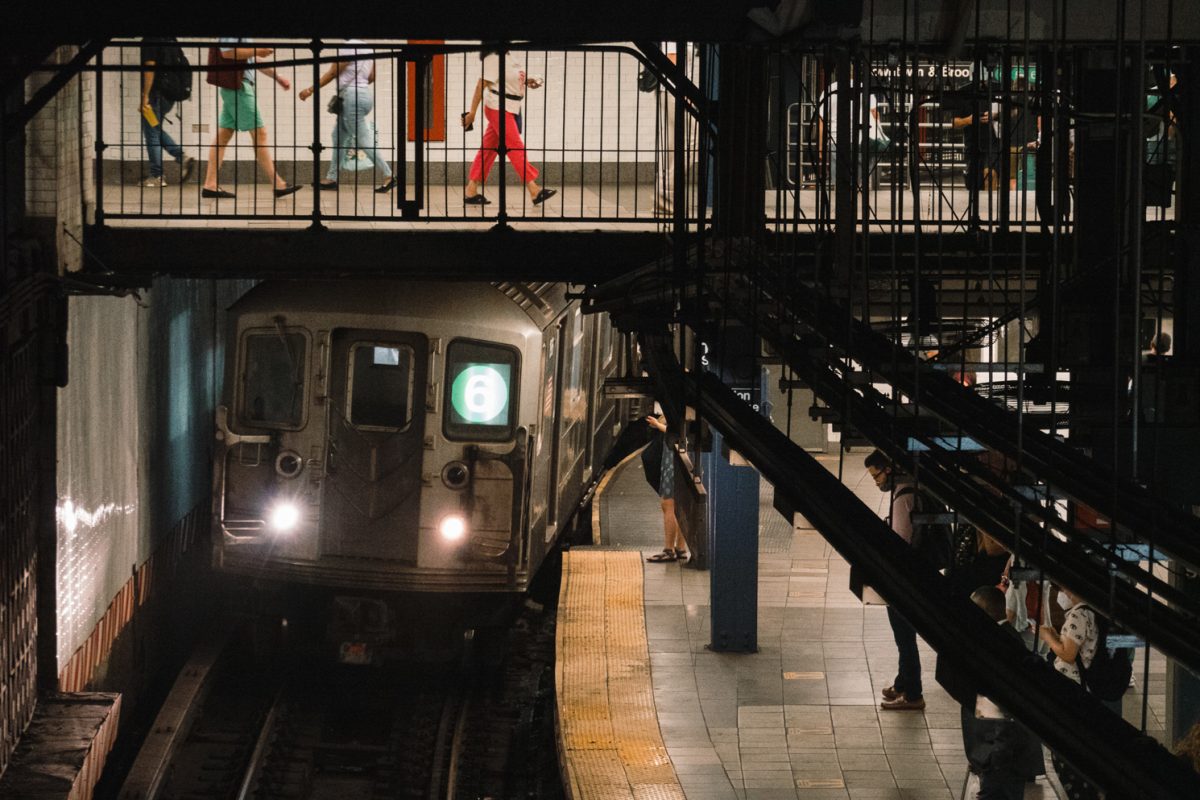Following a recent crime spike in New York City’s subway system — with transit crime up 16.7% compared to this time last year — Gov. Kathy Hochul made the contentious decision to station 1,000 New York state police and National Guard members on subway platforms. While the move is aimed at enhancing public safety, the complicated problems the city’s public transit system is experiencing demand more nuanced solutions.
The decision is also concerning for the thousands of students at NYU who commute using the subway system daily — many being people of color — who are far more likely to be unfairly targeted by police. The increase in law enforcement is more of a performative attempt to assuage citizens concerned about crime than an evidence-driven plan to improve safety. Given that there are nine subway stations around NYU’s campuses, students are sure to bear some of the impact of this unproductive change.
Increased presence of armed personnel is more likely to create tensions and promote fear rather than safety. Bee, a student at Tandon, shared their experience interacting with police.
“As a brown student of color, it’s uncomfortable and even scary knowing the very same police officers who are arresting pro-Palestinian protesters, the officers who disproportionately target people of color, the officers who do nothing other than intimidate people with their guns are becoming more and more present within the city,” Bee said. “It’s awful knowing many within the police force share aggressive and biased views of marginalized communities.”
While violent crime is certainly a concern, it is not currently the most common type of crime on the subway — it’s actually theft. In the past 28 days, there have been 47 incidents of felony assault in the city’s transit system, but 81 of grand larceny, the largest category of crime by far. If theft, more so than violent crime, is the problem, then force is clearly not the answer. The solution might instead lie in reducing economic inequality.
A recent article found that differences in income within a population “significantly [escalate] the incidence of thefts,” suggesting that reducing poverty would be a much more effective approach to reducing crime. Rather than spend state funds on bolstering force, Hochul could instead spend the money on creating programs to improve education, provide job trainings and provide social security benefits in an effort to reduce theft.
Not only have police-free approaches been shown to reduce nonviolent crime, they’ve been effective for reducing violent crime, too. According to an analysis from NYU’s Brennan Center for Justice, “nonprofits that focus on crime prevention, neighborhood development, substance abuse, workforce development and youth programming” reduced violent crime even more than they decreased property crime. Clearly, a community-based approach would be a better investment than hundreds of armed officers.
Encountering heavily armed members of the military or law enforcement during an everyday commute might be frightening for some, and even cause feelings of uneasiness or suspicion. This increased anxiety worsens the already existing distrust of law enforcement, turning the commuting experience into one that is not only uncomfortable but distressing. People may also feel threatened by the presence of heavily armed officers performing bag checks, especially in populations that are already disproportionately targeted by law enforcement.
Steinhardt senior Melissa Naxi, a native New Yorker, told WSN that she feels less safe because of the police.
“I see this as a form of hyper-surveillance and intimidation that is meant to target Black and brown folks, which makes me feel uneasy,” Naxi said, “I don’t trust the police to keep citizens safe when they have an extensive history of brutality toward people of color. And this increased militarization doesn’t make it better.”
Tisch senior Gavrie Elliot mentioned that, besides concerns of discrimination, they don’t believe increased police presence is effective.
“It’s stupid,” Elliot said. “Every cop I’ve seen at a station may chase down people for fare evasion, but they don’t do anything when it comes to a genuine crime.”
Austin Celestin, a CAS senior, argued that the governor’s policy is also a financial concern.
“We’re spending all this money … and people are still getting hurt. If spending more on cops in the subways meant a safer subway, we wouldn’t have any crime, any injury, any death, whatsoever.” Celestin said.
There are also real concerns for female students who may experience harassment or feel endangered when using public transit. But, even students who said they felt safer with more police in the subway system understood their peers’ concerns.
“I feel better knowing that, if something happens, I can find help nearby, especially as a commuter, but I definitely see why people might have problems with it,” a female student, who asked to remain anonymous due to safety concerns, told WSN.
Flooding the subway system with more law enforcement officers makes vulnerable people feel even more alone and distrusted. Fully funding mental health resources, affordable housing projects and community engagement activities are some real solutions to create a secure and welcoming subway atmosphere for all who use it. Hochul’s misguided approach to subway safety is not the solution and will only lead to innocent New Yorkers — and by extension NYU students — getting hurt.
WSN’s Opinion section strives to publish ideas worth discussing. The views presented in the Opinion section are solely the views of the writer.
Contact Molly Koch at [email protected].


























































































































































